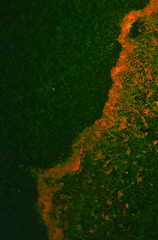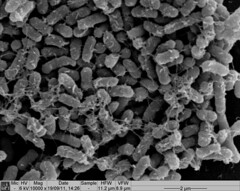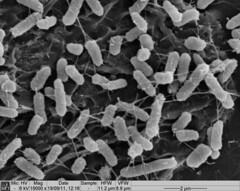Team:Glasgow
From 2011.igem.org
Chris Wood (Talk | contribs) |
Chris Wood (Talk | contribs) |
||
| Line 39: | Line 39: | ||
<tr> | <tr> | ||
<td><a href="https://2011.igem.org/Team:Glasgow/Ranaspumin2"> | <td><a href="https://2011.igem.org/Team:Glasgow/Ranaspumin2"> | ||
| - | <img src="http://farm7.static.flickr.com/6159/6166608760_6578d0ff17_m.jpg" alt="Ranaspumin2 foam tagged with LOV"/> </a> | + | <img src="http://farm7.static.flickr.com/6159/6166608760_6578d0ff17_m.jpg" alt="Ranaspumin2 foam tagged with LOV" width="100%/> </a> |
<p> | <p> | ||
<font size="2" color="grey"> | <font size="2" color="grey"> | ||
Revision as of 23:41, 20 September 2011

DISColi: Bio-photolithography in Device Engineering Using Different Wavelengths of Light


24-hour E.coli Nissle biofilm tagged with RFP |
The DISColi project aims to design and construct a novel bio-photolithographic system for the engineering of biofilms into functional 2D and 3D structures and devices in response to different patterns and wavelengths of light In this project we worked with light responsive promoters, a novel biofilm-forming synthetic biology chassis, E. coli Nissle 1917, and novel biobricks including several designed for biofilm dispersal and fluorescent reporters with wider utility than GFP. |

Electron Mircograph of a dense 24-hour E.coli Nissle biofilm |
 Ranaspumin21 foam tagged with LOV -
Picture courtesy of Prof Malcolm Kennedy, University of Glasgow
Ranaspumin21 foam tagged with LOV -
Picture courtesy of Prof Malcolm Kennedy, University of Glasgow
|
The main aims of our project can be separated into three light-controlled components: the designed sculpting of biofilms; 3D printing for encapsulation of cells; and the controlled modular synthesis of a variety of products. |

Electron Micrograph of a 24-hour E.coli Nissle biofilm |
Highlights!
In the course of our project we have created many noteworthy biobricks and have made a series of very interesting discoveries. Here are our personal highlights, including our favourite biobricks, our new chassis, and our public presence. Have a look!
E.coli Nissle 1917
Our new transformable, non-pathogenic, biofilm-forming chassis!LOV2 and iLOV Reporters
LOV2 and iLOV are our incredible new reporters. Not only are they smaller, florescene brighter and recover from photobleaching faster than GFP but it also functions in anaerobic conditions! Try tagging your favorite proteins.c-di-GMP Phosphodiesterase
c-di-GMP Phosphodiesterase breaks down c-di-GMP, which is a secondary messenger which regulates many behaviours such as motility and biofilm formation. Over-expressing this phosphodiesterase should decrease the levels of c-di-GMP, increasing cellular motility and causing biofilm dispersal. c-di-GMP has many more functions making this biobrick useful in a wide range of applicationsJudging Criteria
In this section we explain why we deserve a gold medal in accordance with the iGEM judging criteria. If you have very little time, this may be exactly what you are looking for!
Sponsors
With many thanks to our generous sponsors, without whom this project would not have been possible.
References
1) Mackenzie et al., 2009. Ranaspumin-2: structure and function of a surfactant protein from the foam nests of a tropical frog. Biophysical Journal, 96, pp. 4984-4992.
 "
"


